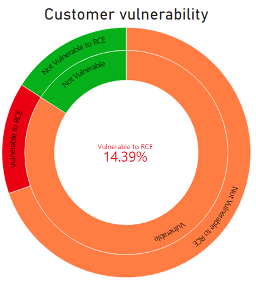Security | Threat Detection | Cyberattacks | DevSecOps | Compliance
December 2021
HowTo: Configure eyeSight w: Cisco ISE & PXgrid
Dynamic Network Segmentation: A Must Have in the Age of Zero Trust
The NERC CIP standards are a set of mandatory requirements for North America's bulk electric system.
Four learnings UK organisations can take from cybersecurity research in 2021
Forescout Enables University Health Network to Remediate Ransomware and Accelerate Zero Trust Security
Forescout is Recognized as a 2021 Gartner Peer Insights Customers' Choice for Network Access Control
Using Zero Trust to Prevent Agency Ransomware Attacks
COVID-19 made moving agency employees and services off-premises essential. This move, however, has also sparked one of the biggest waves of cybercrime the internet has ever seen. Ransomware attacks have been particularly effective against government agencies and critical infrastructure.
Forescout's Response to Apache Log4j Vulnerabilities
Updated 12/20/21 On December 9, 2021, Apache published a zero-day vulnerability (CVE-2021-44228) for Apache Log4j being referred to as “Log4Shell”. This “critical” vulnerability (CVSS score: 10) allows a remote attacker to take control of an affected system. When exploited, this vulnerability allows an attacker to run arbitrary code on the device, giving full control over to the attacker.
2022 Cybersecurity Predictions - From Ransomware and Supply Chain Risks to Operational Technology and IoT
As we look ahead to 2022, we should pause to reflect on the trends of the past year. Ransomware and supply chain attacks have become two of the top concerns for organizations following a series of high-profile attacks, such as those conducted against Colonial Pipeline, SolarWinds and Kaseya. In 2021, our Project Memoria revealed close to 100 different vulnerabilities in common TCP/IP stacks, affecting hundreds of operational technology (OT) vendors.
Losing Control of Your Front Door
On November 10, 2021, Palo Alto Networks released advisories for eight different vulnerabilities affecting the company’s VPN firewall products. The vulnerabilities’ criticality ranges from ‘medium’ to ‘critical,’ with the most severe vulnerability, CVE-2021-3064 (CVSSv3.1 of 9.8), allowing for unauthenticated remote code execution, or RCE.








